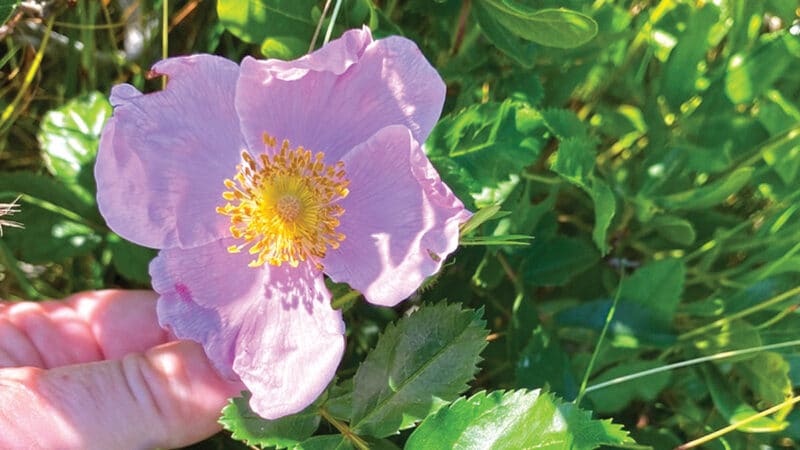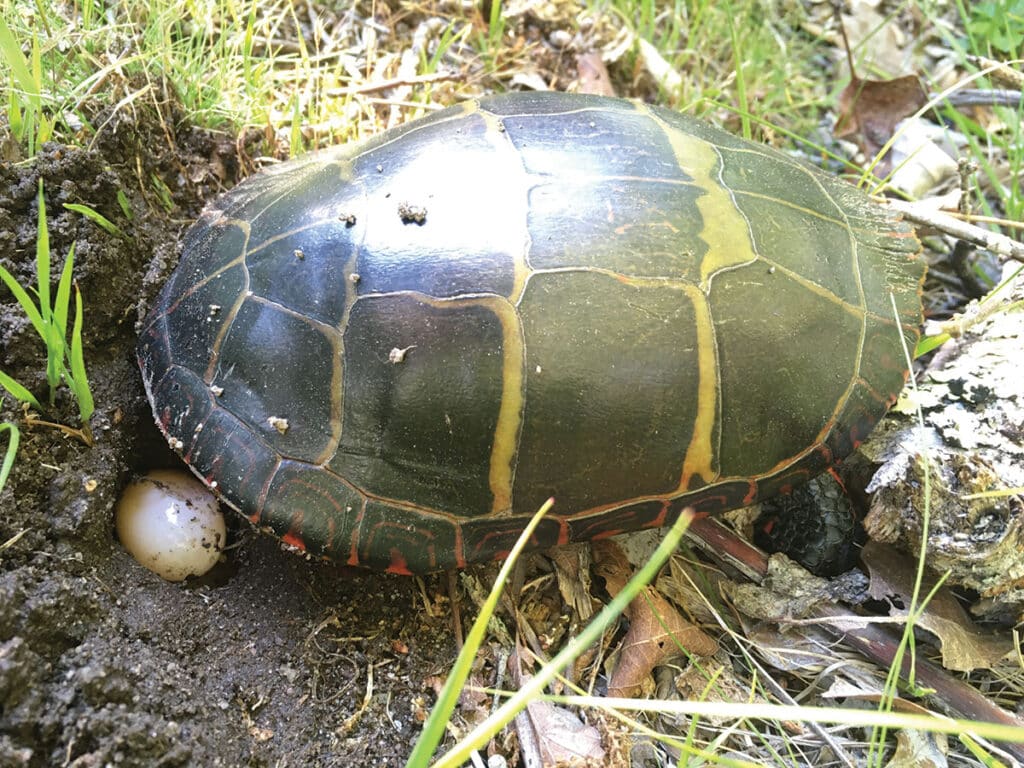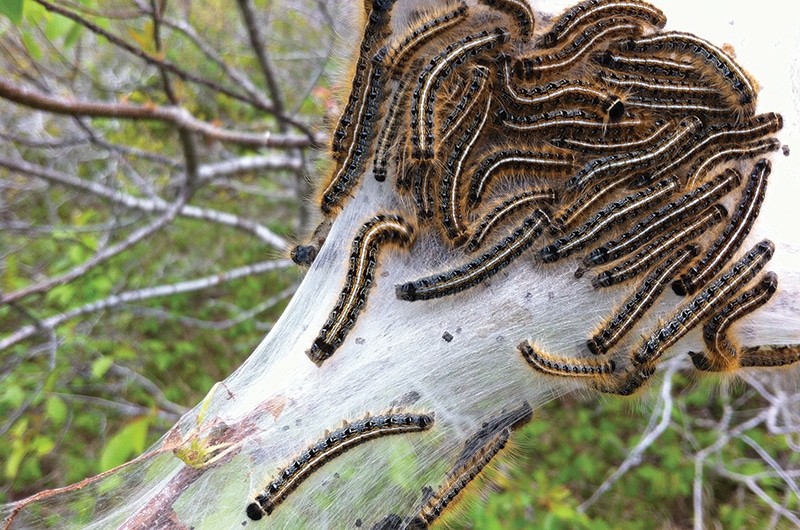by Dr. Sarah Treanor Bois, PhD
Director of Research & Education at the Linda Loring Nature Foundation
June 21 marked the 2023 summer solstice, and it has me thinking about what the solstice means. Technically, it is when the sun is at its azimuth, the longest day of the year for us. The particular dates are targeted as the boundary between our seasons because of a series of factors based upon the relationship between the earth and the sun. I am an ecologist, not an astrophysicist (though one of my best friends is!), but I do know the seasons change based on more than just the calendar and light levels. However, there is a lot to think about when we consider solstice.
The word “solstice” comes from the Latin words sol for “sun” and sistere for “To Stand Still.” This is the point where the sun appears to reach its highest point in the sky; thus ancient astronomers came to know the day as one where the sun appeared to stand still.
Since humans began using the sun as a timekeeper, the summer solstice has been marked with varying degrees of importance. Many cultures celebrate various combinations of the winter and summer solstices, the equinoxes, and the midpoints between them, leading to various holidays arising around these events. My personal favorite is the celebration of the summer solstice as a time to give thanks to nature: a time to slow down just like the sun and look around you.
Of course, on Nantucket at the end of June, there is no slowing down for those of us who work on-island. I think of it more as a pause before the busiest part of the season begins. In celebration of the solstice, I am going to take a moment and give thanks to some of my favorite parts of nature on Nantucket.
Nesting turtles – even though I am a plant ecologist, I have a special affinity for herps. That is, I really like reptiles and amphibians, with turtles being at the top of my list (sorry salamanders). As a group, our freshwater turtles are all active right now, travelling to nesting sites. Eastern painted turtles, spotted turtles, and the brackish-loving snapping turtles are all out and about. For animals who feel safer in the water, it’s amazing to watch these old girls lumber out of the pond or vernal pool looking for “just the right spot.” Despite their differences in size, the goldilocks effects is the same for all three species. They prefer sandy, loose soils generally close to water but in an upland spot with open canopy. We seem to have plenty of that on Nantucket.
Many people have reported seeing turtles around walking trails and crossing roads. I had to stop and “help” a medium-sized snapping turtle crossing Eel Point Road just last week. Please be mindful and careful while driving. That goes for any time, but during turtle nesting season, it can be especially important. If you see a turtle in the road, please avoid it. Here are a few tips essential for turtle safety (and your safety): slow down, stop (if you can do so safely), and let it pass. If it is stopped or if you think you can SAFELY move the turtle, always bring it to the road edge in the direction it was headed. Never pick up a turtle by the tail. And finally, even if snapping turtles look old and slow, they can move fast and are likely to bite because they feel threatened. If you have a shovel or a broom in your car, you can help them scoot across the road.
Our turtle species survive as a population by being long-lived. Keeping the adults safe ensures more turtles to come.
Caterpillars – my personal favorite, the eastern tent caterpillar (ETC), has already done its thing by now. Those that malign these wonderful creatures no longer have to see their wiggly bodies on black cherry trees. They have all dropped to the leaf litter and are pupating (in a cocoon) to become moths later in July. Their tents are still visible on some trees, but these biodegradable abodes will soon disappear. All that frass (fancy word for caterpillar poop) will be nutrients for the tree roots below.
The stars of the show right now are monarch caterpillars, which are just starting their activity. It’s interesting to me how one caterpillar can be celebrated (monarchs) and another loathed (ETC) and yet they have similar activities on Nantucket—eating their way through their favorite leaves. In the spirit of solstice, let’s pause and admire the caterpillars. As in one of my favorite children’s books, The Very Hungry Caterpillar by Eric Carle, they are just trying to stuff their faces, ive long enough to make a cocoon (or chrysalis), and metamorphose into what they know they can become. I might try living a caterpillar life this summer!
The smell of roses – the roses covering the cottages of Sconset won’t be at their peak for another week or so. But our native roses are starting to bloom, and the scent is heavenly. Carolina and Virginia roses (Rosa carolina and Rosa virginiana) are native to our open grasslands and heathland habitats. The small, delicate roses are often forgotten when they bloom at the same time as the obnoxious beach roses (Rosa rugosa) or highly invasive multiflora rose (Rosa multiflora). The light pink petals of our native wild roses are matched with a delicate rose scent that wafts through the moors and south shore grasslands. Pollinators love these roses, and their hips (the fruit of the rose) are important food sources for birds and small mammals. I have a true appreciation for our native species that can be beautiful and dainty while being able to grow in the harshest of environments: our nutrient-poor, dry, sandy soils. A different kind of “Rosé All Day.”
Fishing season – as a fisherman’s wife and recreational angler myself, I love this time of year for the bounty of fishing season. It’s early enough in the season that the crowds aren’t making fishing impossible along the shore, the docks, or the best boating spots. But we’re far enough into the season that the fishing is fantastic. Striped bass, black seabass, and bluefish are all on the menu with fluke keepers in soon. This is the season for a fish fry or grilling and then putting some away in the freezer for later. All of these fish are better fresh than frozen, but just like canning tomatoes at the end of summer, eating a striper filet from the freezer in February reminds us of the bounty of early summer. If you’re able, cast a line and see what you can catch. Fishing also means slowing down at the water’s edge: it’s a great time to observe everything else around you.
What are your favorite things about the summer solstice?
Even though solstice marks the longest day and the beginning of summer, it might not quite feel like it yet. The atmosphere and, more importantly for Nantucket, the ocean takes time to heat up. This means that even though the solstice marks the longest day (and the most direct sunlight), there can be a lag between that and the peak of warm weather. July will be here soon enough with its hot weather, but it also brings crowds, traffic, and busy summer schedules.
Let’s take this gentle reminder to pause and think about some of our favorite parts of Nantucket nature.





